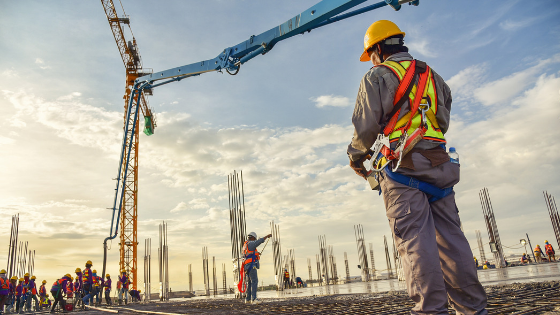As a general contractor, although you are not directly liable for on-site accidents caused by subcontractors, such mishaps will cost you time and money. It’s therefore in your interest to vet the safety practices of your subcontractors as carefully as possible when building your team for a project.
Although subcontractors’ official safety records and metrics can be accessed through the OHSA and looking at their Experience Modification Rate (EMR) respectively, you gain a much deeper understanding of a subcontractor’s commitment to safety through having a conversation with them.
We will go through some of the most important questions to ask a subcontractor when vetting their commitment to safety. Please note that these questions should be used in conjunction with looking at the OHSA and EMR rather than as a replacement for it.
Ask about very specific safety practices to your project
A lot of workplace accidents occur due to a lack of attention to detail around the specificities of your project. Therefore you want your contractor to be able to tell you exactly what health and safety procedures they will be putting into place when faced with the specific challenges of your project.
To reiterate, specificity is king here. The more specific that you can explain exactly what a subcontractor needs to do before the project starts, the more accurately you can ascertain whether they are keyed into the potential hazards that they will face. This requires work on your end (as the General Contractor) to understand exactly what you want is done so you can as a subcontractor the right questions.
When you ask these questions, you are looking (again) for specific, practical answers from your subcontractor. If they can give past examples of how they have mitigated similar hazards, or tell you exactly what tools they will use to do this, then all the better.
Ask about the subcontractor’s team and hiring practices
Often when you hire a subcontractor, they will be delegating a lot of the hands-on work to a team. This means that it’s the team members, rather than the actual subcontractor who you speak to, who are directly responsible for accidents on-site.
You, therefore, want to do as much digging as you can into who your subcontractor employs, and how they hire and vet staff.
OHSA and EMR records view a company as an entire entity, so finding out information about individuals’ approaches to safety will take some verbal digging.
Some useful questions to ask include:
- How much combined experience will the team working on the project have?
- Is there a designated “team leader” who will be on-site day in and day out and if so then can you talk to them directly?
- What other projects are team members working on in addition to this one? Is there a risk of overstretching?
- What licenses and insurances do these employees have?
- Do team members have any specialized safety training? If so then what?
What you are looking for here is for a subcontractor’s team members to have “skin in the game” as far as taking accountability for site safety is concerned. The more of this that you recognize, the better.
Look for subcontractors to have bonding as well as insurance
Bonding acts as a second layer of coverage over general liability insurance if payouts are particularly large.
In most states construction professionals require bonding. As a general contractor, you should always require it from your contractor. This requirement is as much due to what being bonded represents, as the financial coverage itself.
Again a subcontractor being bonded is indicative of a wider level of accountability. This should, as a general rule of thumb, translate into attention to detail in their safety practices.
Look for realistic time frames in bids
While pushing for ambitious deadlines is part and parcel of running a general contracting business, you should always bear in mind that there is an upper limit to how fast certain jobs can be done while still following proper safety protocols.
Again it's worth doing your homework to properly map out how much time it will require to complete your project safely, and then compare this to what subcontractors estimate as their time frame in their bid. If time frames seem shorter than expected, then dig a little deeper into how long a subcontractor expects each part of a job to take. Ask them if they have factored in relevant safety protocols into this time frame.
If a subcontractor can explain away their time frames with fair reference to safety procedure, then you can give them the benefit of the doubt, especially if their official safety history (as found on the OHSA and EMR) is strong.
Look for a proactive, innovative approach to safety management
One of the keys to improving construction safety is through streamlining as much of the health and safety reporting as possible, so staff can focus fully on their immediate tasks at hand. Technology has a big part to play in this process, and it's, therefore, worth screening subcontractors for whether they are aware of these construction risk management systems and if so, whether they implement them.
Implementing these types of technology suggest that a construction professional takes a proactive approach to minimize hazards on sites. While lack of use of these technologies does not have to be a dealbreaker, their implementation should be one of many positive signs that a subcontractor takes safety as seriously as you want them to.
About the Author
This article was written by Volodymyr Barabakh. Volodymyr is the Founder and Project Director of the residential construction company Fortress Home.
